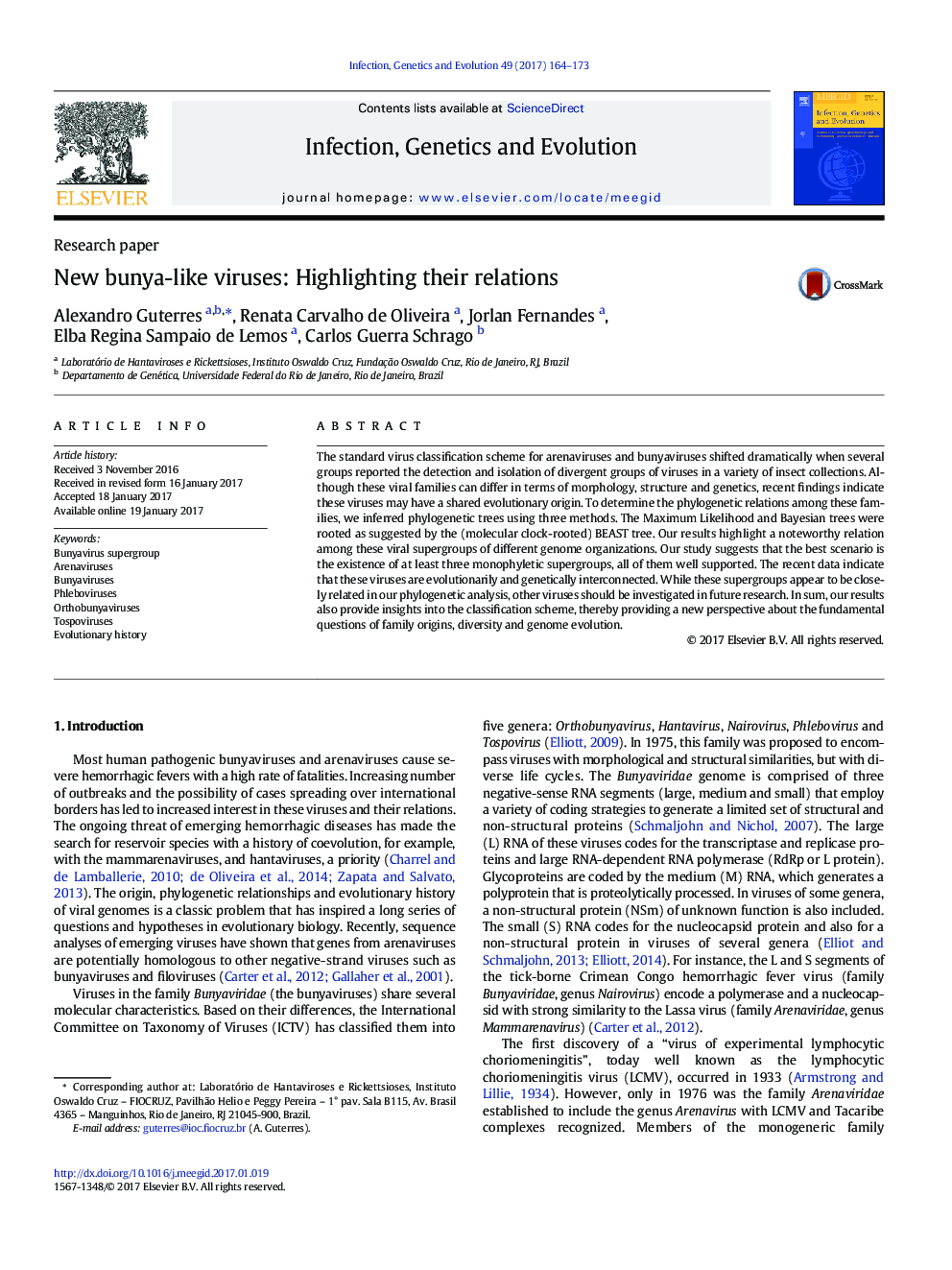| کد مقاله | کد نشریه | سال انتشار | مقاله انگلیسی | نسخه تمام متن |
|---|---|---|---|---|
| 5590625 | 1570154 | 2017 | 10 صفحه PDF | دانلود رایگان |
- The existence of at least three monophyletic Bunya-viruses supergroups
- The data reinforces the inclusion of arenaviruses in the bunyaviruses group.
- The bunya-like displays a wide variety of genome: bi, three and four segments.
- New perspective about origins, diversity and evolution in bunya-like viruses
The standard virus classification scheme for arenaviruses and bunyaviruses shifted dramatically when several groups reported the detection and isolation of divergent groups of viruses in a variety of insect collections. Although these viral families can differ in terms of morphology, structure and genetics, recent findings indicate these viruses may have a shared evolutionary origin. To determine the phylogenetic relations among these families, we inferred phylogenetic trees using three methods. The Maximum Likelihood and Bayesian trees were rooted as suggested by the (molecular clock-rooted) BEAST tree. Our results highlight a noteworthy relation among these viral supergroups of different genome organizations. Our study suggests that the best scenario is the existence of at least three monophyletic supergroups, all of them well supported. The recent data indicate that these viruses are evolutionarily and genetically interconnected. While these supergroups appear to be closely related in our phylogenetic analysis, other viruses should be investigated in future research. In sum, our results also provide insights into the classification scheme, thereby providing a new perspective about the fundamental questions of family origins, diversity and genome evolution.
Journal: Infection, Genetics and Evolution - Volume 49, April 2017, Pages 164-173
